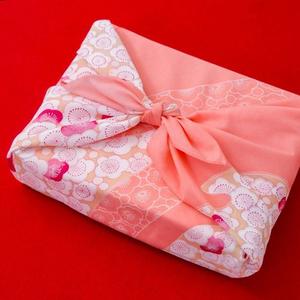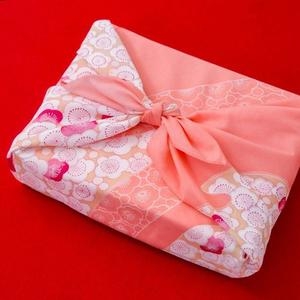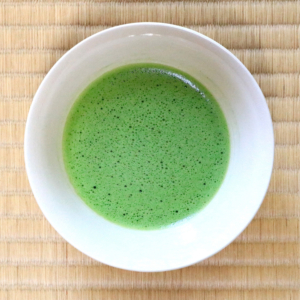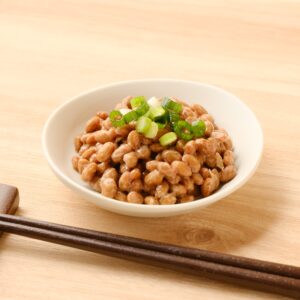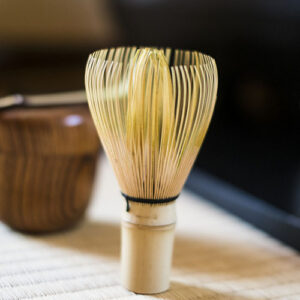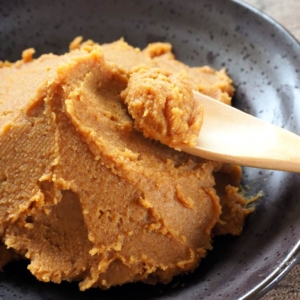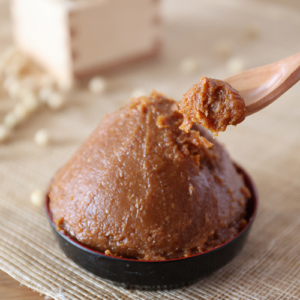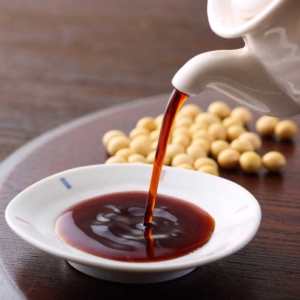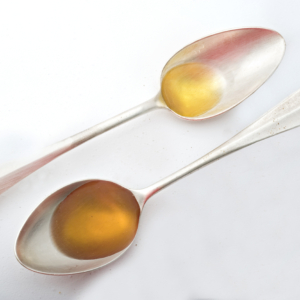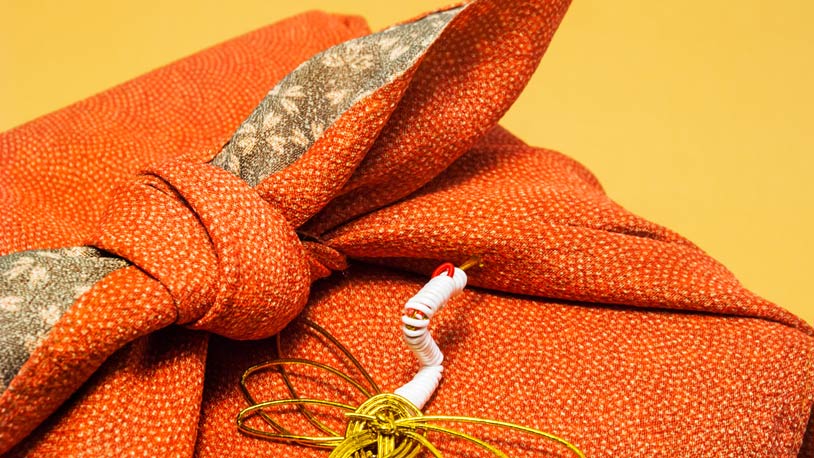
Have you heard about Furoshiki?
Furoshiki is the Japanese traditional cloth, with beautiful colors and patterns, used for gift wrapping, carrying and transporting various items, and even useful as luggage.
Wrapping items in Japan is a culture that has been loved for many years. In fact, furoshiki is a wrapping cloth that holds a long history in Japan. Its existence gained more fame worldwide in recent years as an eco-friendly bag. Furoshiki is presenting a stylish way to wrap items and works as a replacement for plastic and paper bag.
“How can I use furoshiki to wrap items?” using furoshiki will enrich your awareness for the environmental issue, as well as taking care of items more carefully.
In this article, we will focus on how to wrap furoshiki cloth and other informational details about the furoshiki itself.
What is Furoshiki Cloth?
The world began to take their attention to this tool called furoshiki.
“So, what is Furoshiki?”
As we mentioned earlier, furoshiki is the Japanese traditional cloth used for many purposes such as gift wrapping, carrying and transporting various items, and even useful as luggage. It comes in various sizes, with mesmerizing colors and patterns.
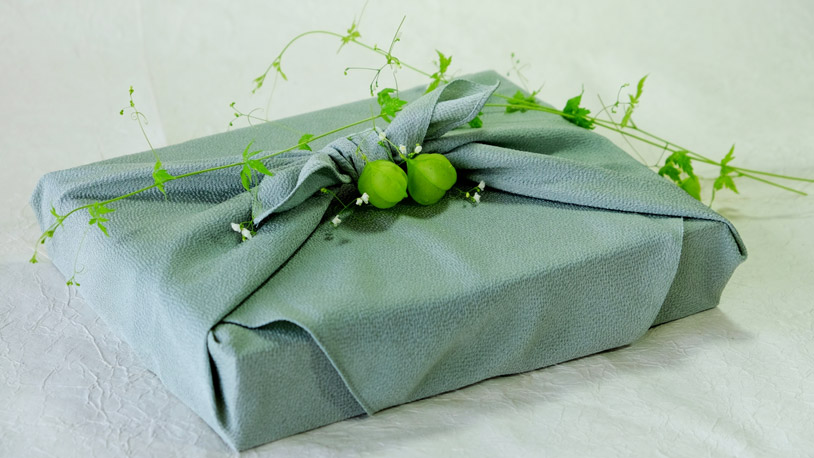
Furoshiki holds a long history in Japan. Wrapping culture in Japan has always been practiced with wisdom and care for hundreds of years ago.
But when it was first implicated, the word “Furoshiki” was not known as furoshiki in the beginning. The way the furoshiki was used also differs along with its history. You can learn more about Furoshiki’s History later in this article.
What is furoshiki made of?
Furoshiki can be made with many kinds of cloths, such as cotton, polyester, rayon, silk, and nylon.
In the past, silk furoshiki specially used by important people such as the imperial family and generals. But now, you can use the silk furoshiki for formal occasions or when giving very expensive gift.
Please clean the silk furoshiki with dry cleaning because silk is a delicate material. Please avoid wrapping heavy objects if you are using the silk furoshiki. The rayon cloth, similar to silk cloth, also need a dry cleaning.
The cotton furoshiki, meanwhile, is a light-weight and smooth material. It is easy to clean and has more durability to carry heavier objects. However, please note to separately wash this type of furoshiki with other colored fabrics as it would transmit their color to others.
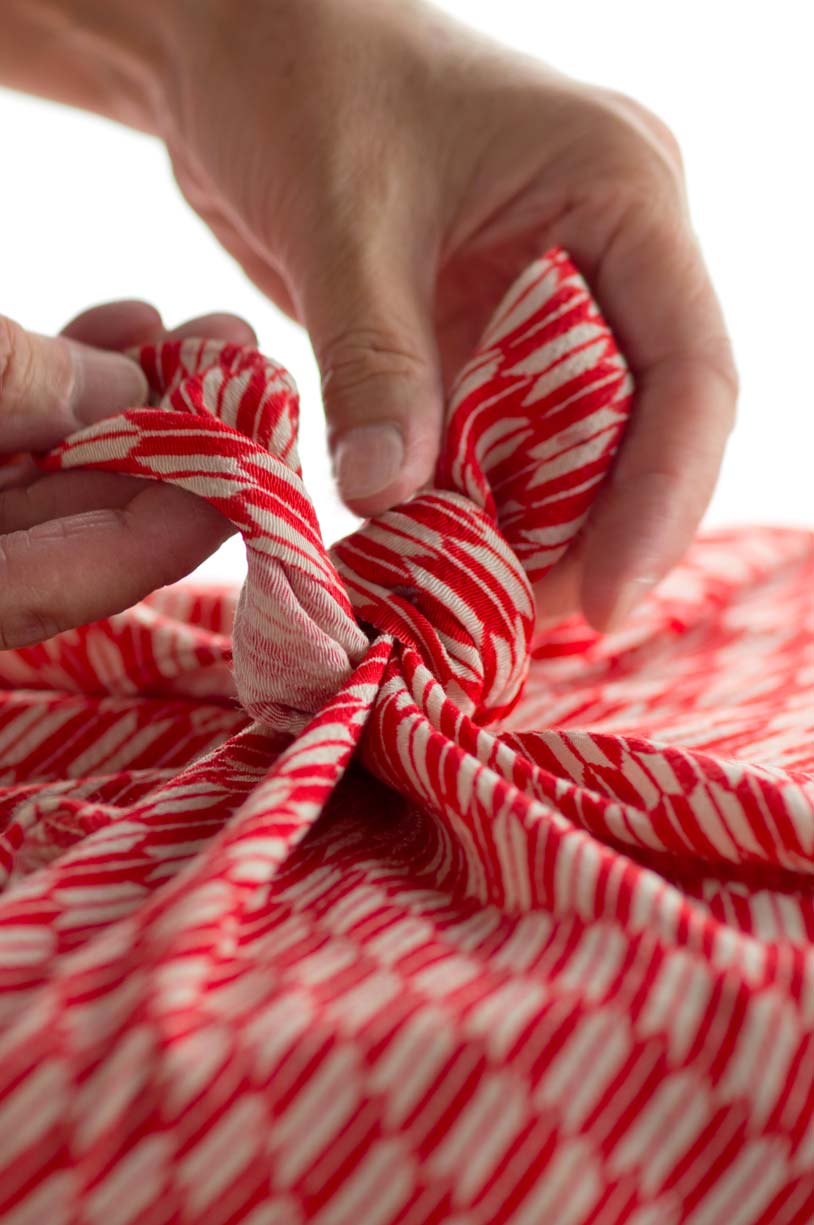
Other fabrics available:
Rayon furoshiki: tends to wrinkle, has glossiness, please do not use to bring heavy objects (dry cleaning).
Polyester furoshiki: durable, easy to use and easy to wash (washable).
Nylon furoshiki: light-weight, durable and affordable (washable).
Furoshiki available these days are available with many types of fabrics. Please try to use it by all means!
What is the meaning behind furoshiki cloth’s color?
Furoshiki can be used for many purposes, and each occasion has its preferable color. The color used in furoshiki are basically the Japanese traditional colors. Learning about the meaning behind those colors will help you choose what color you’ll need!
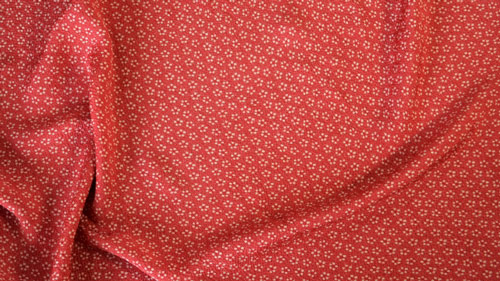
RED
Red and pink owns a bright and eye-catching color. Therefore this color designed for a happy and auspicious events, totally perfect for a wedding gift.
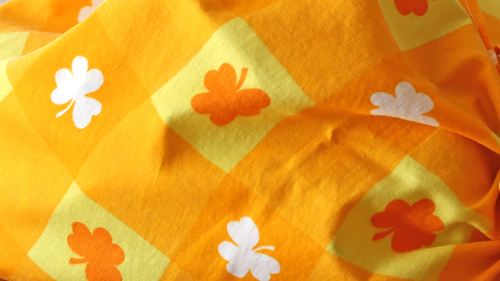
YELLOW-ISH
The bright astringent color or a color that closes to golden color is also suitable for happy events. Some furoshiki also make a reversible cloth with red and yellow-ish color.
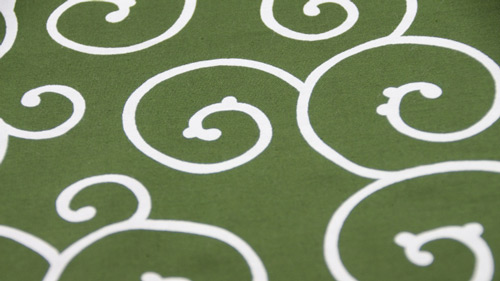
GREEN
Green color usually used for funerals. It is said that the light green color, also known as Uguisu or Rikyu, was a popular color in the Edo period.
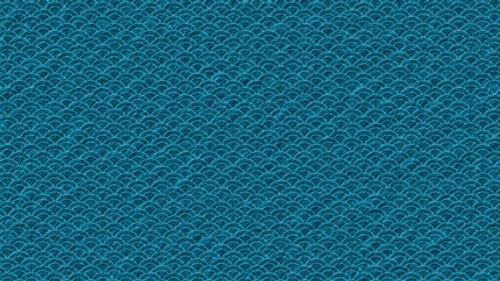
BLUE
The cool color such as blue and indigo often used for sad and condolence occasions (funerals). However, it can be used normally for daily errands.
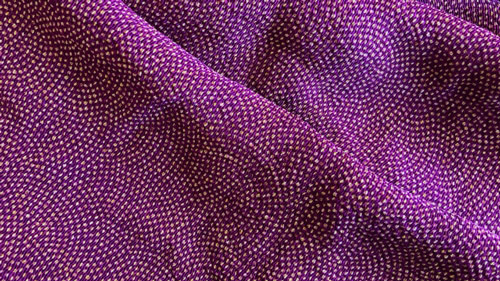
PURPLE
Purple was once a color worn by high-ranking people because it represents longevity with elegant color. Express your gratitude through gifts, or you can use it in funeral and any other occasion.

BROWN-ISH
The plain color shades of brown expressing the modest characteristics of Edo townspeople from the old story. Brown color also has a calming and classy taste on it.
What is Furoshiki Used for?
“Is furoshiki only use to wrap bento box?” some people may have that impression. However, furoshiki is a versatile cloth that can be used for multiple purposes.
If you happen to like gift wrapping, owning a furoshiki at home will be a huge help. Furoshiki’s beautiful and stylish color will surely make gift wrapping more enjoyable. Not only for gift wrapping, but furoshiki is also useful for storing items.
Let’s check what we can use using a single furoshiki!
Wrap Bento Box for School, Work or Picnics
As you know, it’s very common to use bento box in Japan. Wrapping bento boxes with furoshiki will give the elegant yet simple feelings as you bring your own bento box for school, work or picnics.
To wrap bento box, you can try using these methods to wrap using furoshiki:
● Basic Carry Wrap (おつかい包み)
● 4 Tie Wrap (四つ結び)
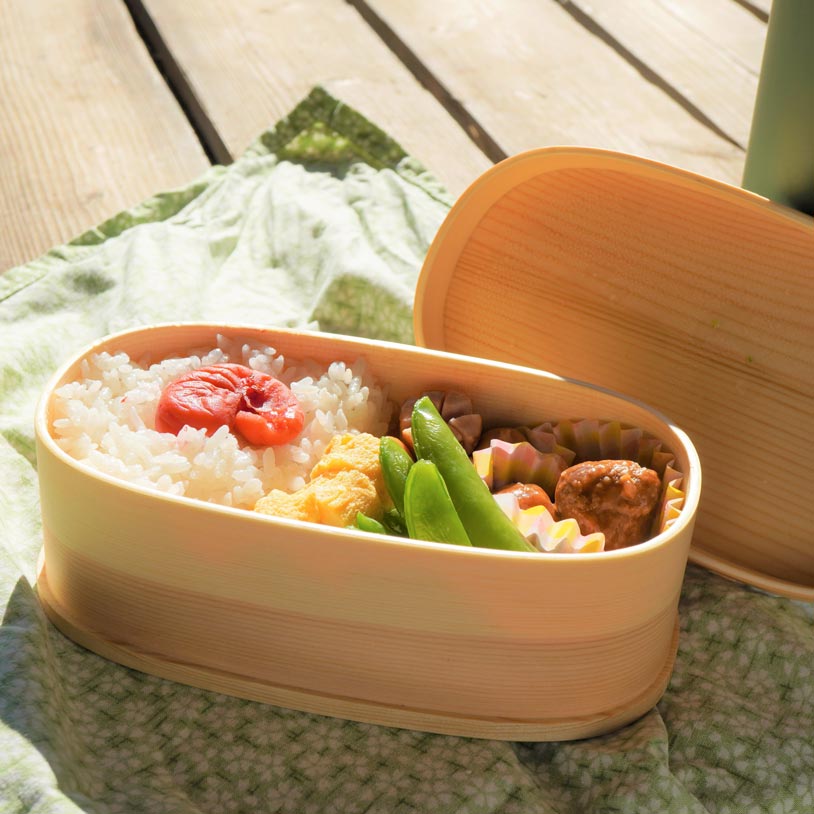
Wrap Gift for Relative
Gift wrapping is the most common way to use furoshiki. In Japan, people usually use furoshiki to wrap the annual summer gift (Ochugen), the year-end gift (Oseibo), kimonos, etc. The gift wrapped can be cube, cuboid, sphere, or even flat items. Learn how to wrap using furoshiki cloth, here!
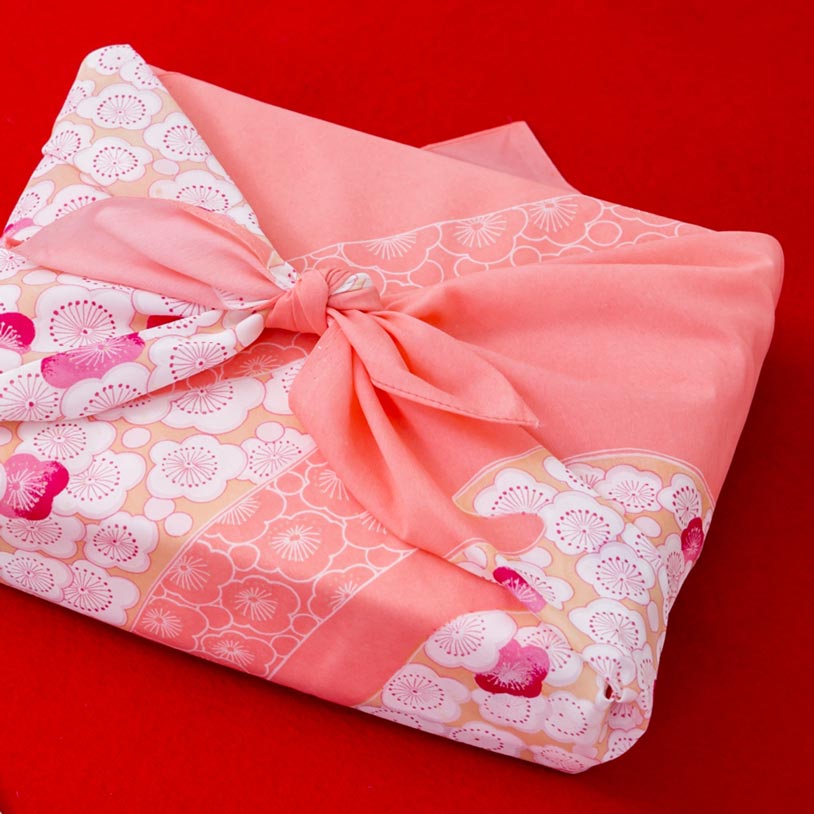
Safe Wrapping for Bottles
Furoshiki also useful when you want to wrap wine or sake bottles as a gift. You can wrap 1 bottle or 2 bottle at once.
When wrapping 1 bottle = Bottle Carry Wrap 1 (瓶1本包み)
When wrapping 2 bottles = Bottle Carry Wrap 2 (瓶2本包み)
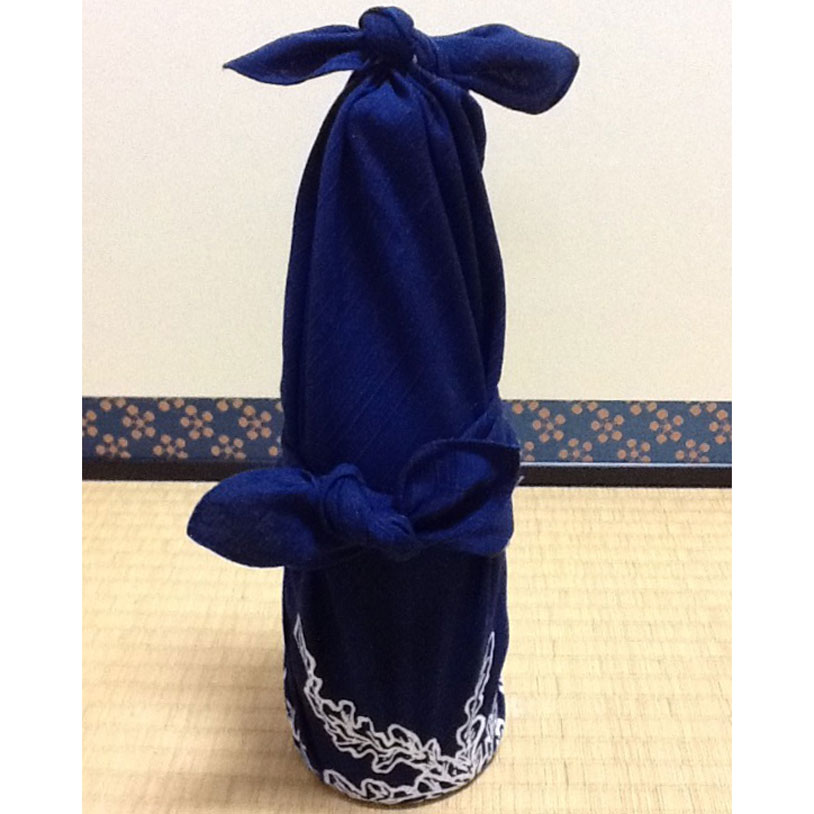
Wrap Melon or Other Fruits
Furoshiki will be a suitable tool to wrap heavy fruits such as melon because it is made with cloth. You can easily untie furoshiki and use it for another occasion next time.
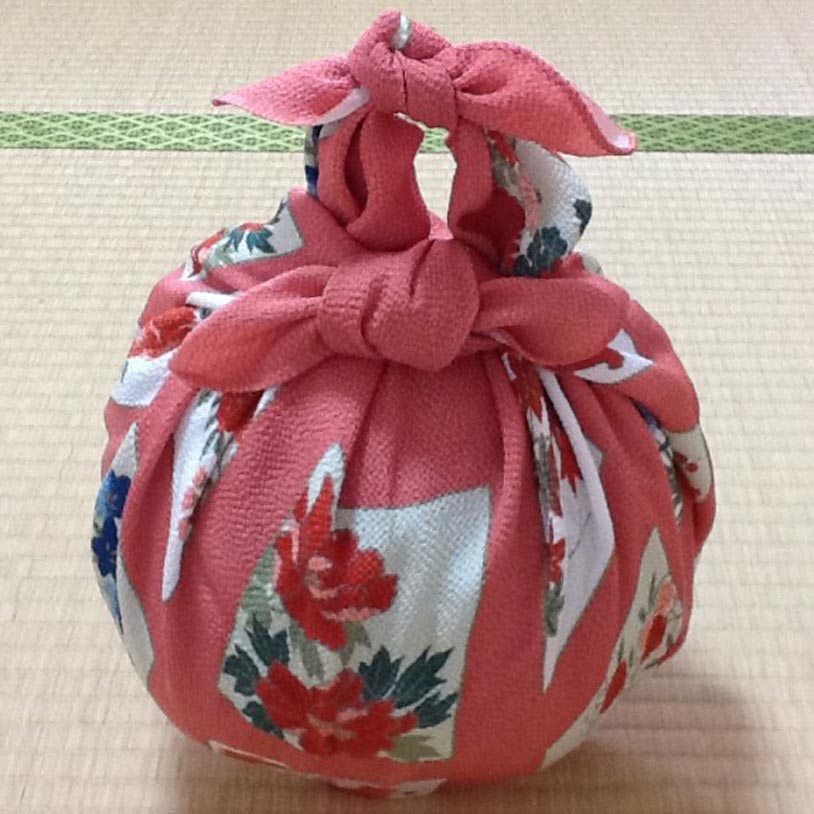
Fashionable as Shopping Bag and Luggage
Did you know that the furoshiki bag is trending as a fashion product?
Furoshiki cloth can be a replacement for a shopping bag and even become your luggage. Put your groceries or even small items as you traveling using furoshiki.
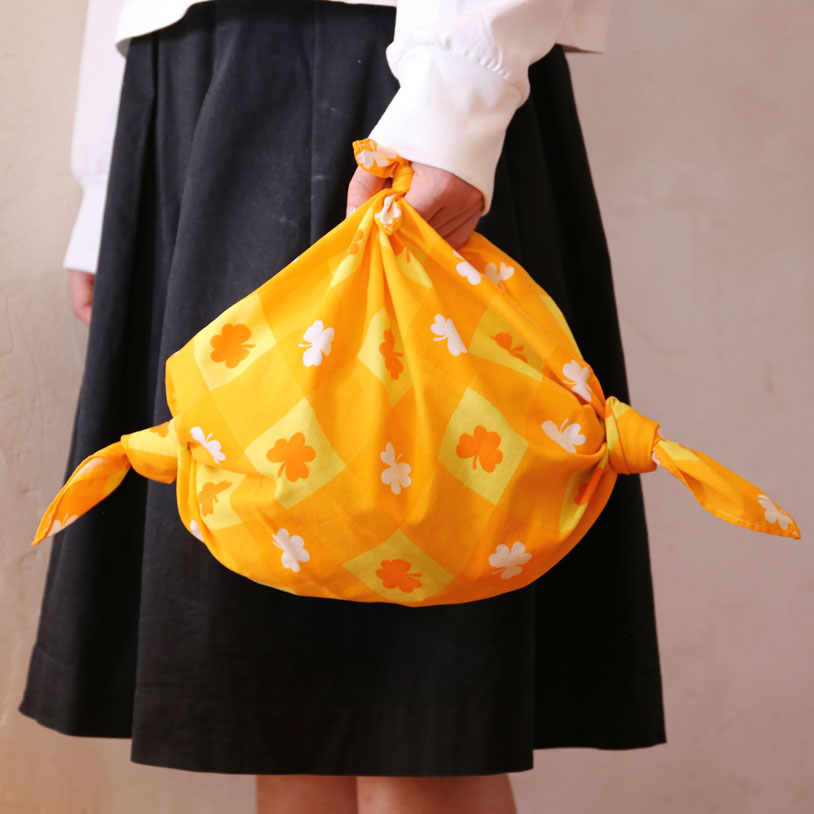
How to Wrap Furoshiki Cloth?
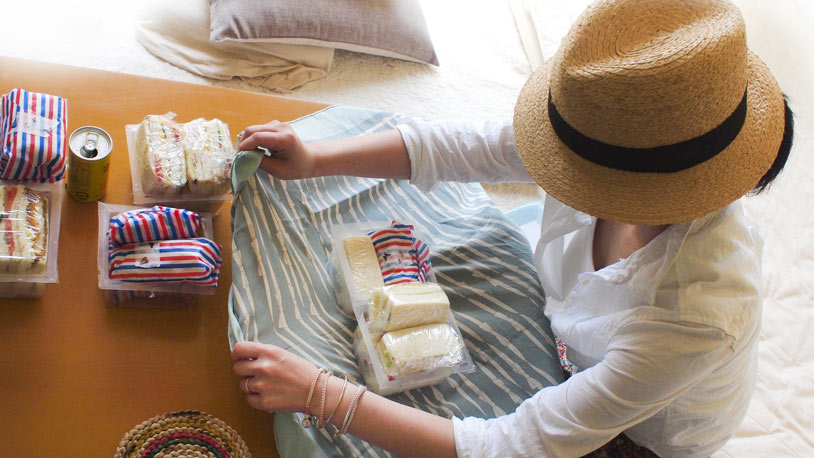
Learning how to wrap objects using furoshiki cloth is a great first step. In this article, we will learn 10 ways to wrap items using furoshiki cloth.
[1] How to Tie The Basic Knot
Before you know about the wrapping techniques with furoshiki, let’s first know how to do The Basic Knot (おつかい包み). You will always use this basic knot when doing the wrapping using furoshiki.
-
STEP 1
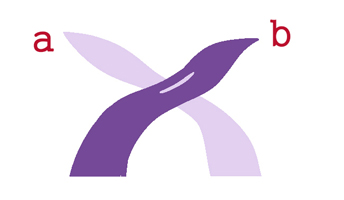
Cross the connection points as shown in the figure.
-
STEP 2
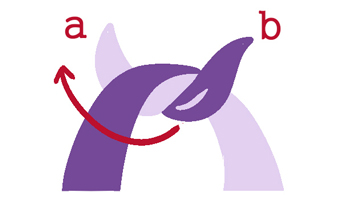
Pass (a) from below and tie it.
-
STEP 3
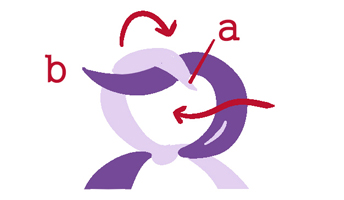
Connect and tie the (a) and (b) once again in the same way.
-
STEP 4
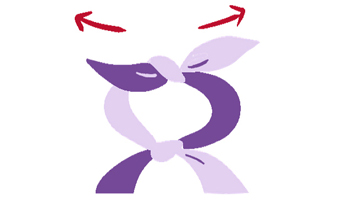
Pull the ends of the knot evenly.
-
STEP 5
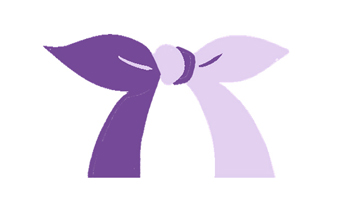
Once it is firmly tied, shape it and finish.
[2] How to Untie The Basic Knot
Below is the steps to easily untie the tight basic knot.
-
STEP 1
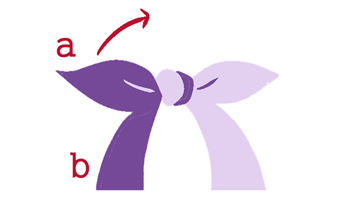
Hold (a) to the right, and (b) to the left.
-
STEP 2
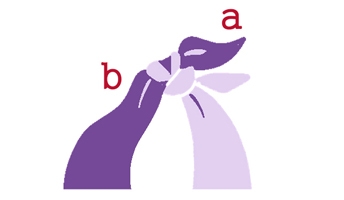
Pull firmly until (a) and (b) are in a horizontal line.
-
STEP 3
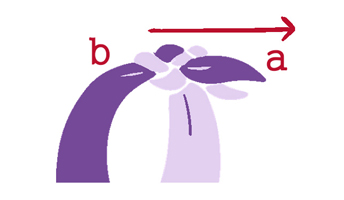
Pull the knot by stretching it multiple times, and it will slip out eventually.
[3] Basic Carry Wrap
This wrapping is perfect for wrapping bento and other cube to cuboid objects. Basic Carry Wrap (おつかい包み) is the most common and the easiest wrapping technique using furoshiki.
-
STEP 1

Put the object on the center.
-
STEP 2
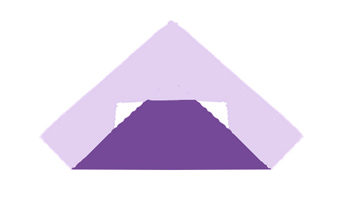
Cover the object with one corner. Fold the top of the corner in the bottom of the object.
-
STEP 3
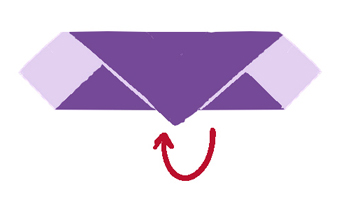
Cover the object with the opposite corner. Fold the top of the corner into the bottom of the object.
-
STEP 4

Pull the left and right side in the upright position.
-
STEP 5

Tie both sides with the basic knot.
-
STEP 6
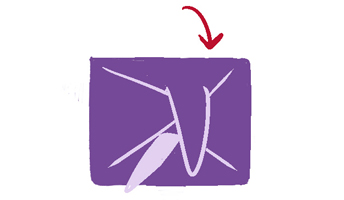
Do the basic knot once again.
-
STEP 7
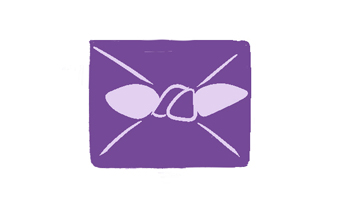
Shape it and finish.
[4] 4 Tie Wrap
The 4 Tie Wrap (四つ結び) is sturdier than Basic Carry Wrap because it uses double basic knot. You may want to use this technique to carry heavier objects.
-
STEP 1
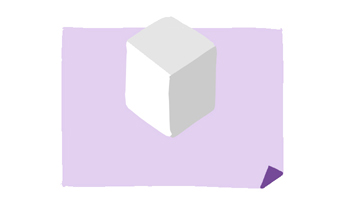
Put the object on the center.
-
STEP 2
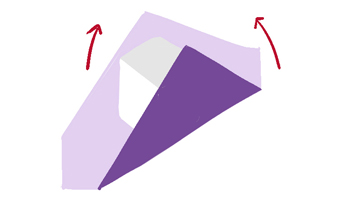
Pull the left and right corner.
-
STEP 3

Tie it using the basic knot 2 times.
-
STEP 4
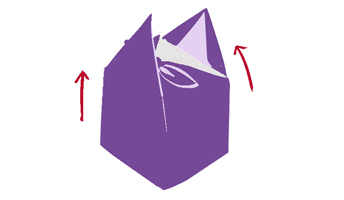
Pull the remaining corners, and tie it using the basic knot 2 times.
-
STEP 5
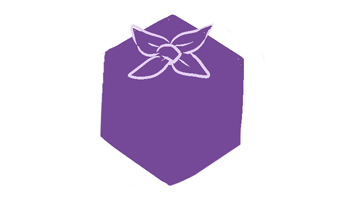
Shape the knot and finish.
[5] 2 Glass Wrap
Wrapping a present in form of glass to your relatives may be a problem, isn’t it?
Glass is fragile, therefore this 2 Glass Wrap (グラス2コ包み) technique will lower your worry when wrapping 2 pieces of glasses. (Suitable size: 50 cm width)
-
STEP 1
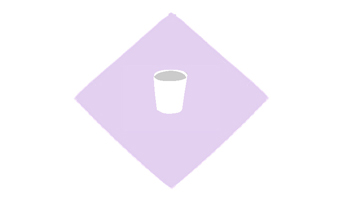
Place a glass upright on the center of the furoshiki.
-
STEP 2
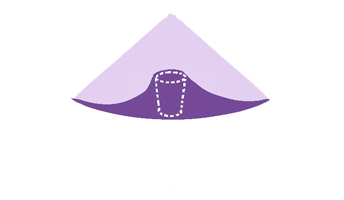
Cover the glass with one corner.
-
STEP 3
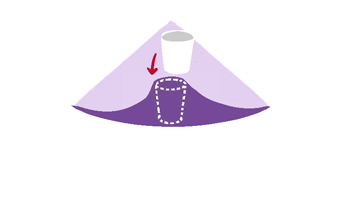
Put another glass on the top of the covered furoshiki corner and the first glass. The furoshiki in the middle used as a cushion between glasses.
-
STEP 4
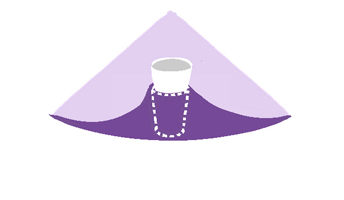
Cover the glasses with the opposite corner.
-
STEP 5

Lift the horizontal corners, cross it in the behind and tie it in the front with the basic knot 2 times.
[6] Bottle Carry Wrap 1
The Bottle Carry Wrap 1 (瓶1本包み) technique is another common technique using furoshiki. It is widely used since ancient times to carry a bottle. Please use the 70 cm to 90 cm size of furoshiki to do this wrapping.
-
STEP 1

Place the bottle in the center and fold it up into triangle.
-
STEP 2
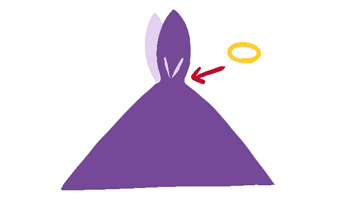
Tie the neck of the bottle covered in furoshiki cloth with a rubber band, make sure to tie it tightly.
-
STEP 3
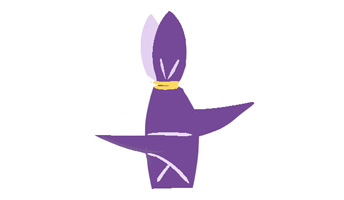
Cross both remaining corners on the back, then bring it on the front side.
-
STEP 4
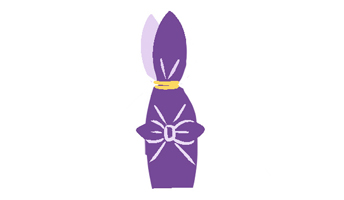
Tie it in the front with the basic knot 2 times.
-
STEP 5
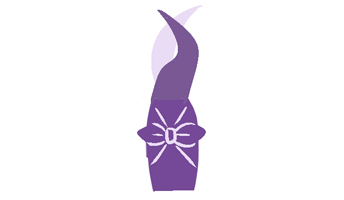
Remove the rubber band and tie the top of the bottle with basic knot 2 times.
[7] Bottle Carry Wrap 2
Why not wrapping 2 bottles at once when you have 2? The Bottle Carry Wrap 2 (瓶2本包み) wrapping technique will be useful to keep your bottles safe when traveling. (Suitable size: 90 cm width)
-
STEP 1
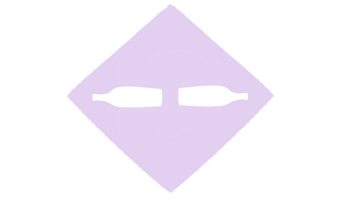
Lay two bottles in the cloth with a little gap between them.
-
STEP 2
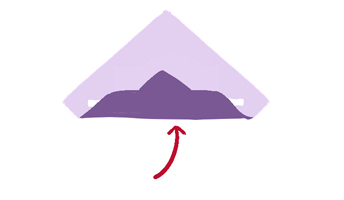
Fold one side to the middle, covering both bottles.
-
STEP 3

Roll the bottles firmly to the end of the open corner. Be careful so the bottles will not slip.
-
STEP 4

Straighten up the bottles in the upright position.
-
STEP 5
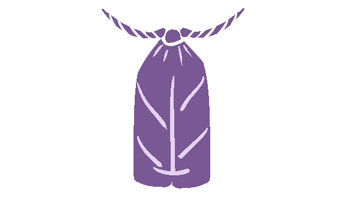
Tie the corners with the basic knot 2 times.
[8] Long Object Wrap
The Long Object Wrap (円筒結び) is a well-knotted wrapping technique that will useful to wrap a long and cylindrical objects such as documents or posters.
-
STEP 1
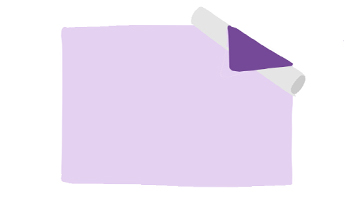
Place the long object at the end of one corner.
-
STEP 2
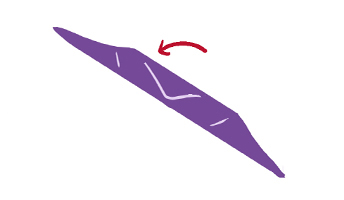
Roll the long object firmly to the end of the another corner.
-
STEP 3

Hold the remaining corners and tie it with the basic knot 1 time.
-
STEP 4
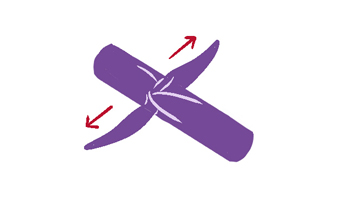
Pull the tied corners horizontally and cross it on the back.
-
STEP 5
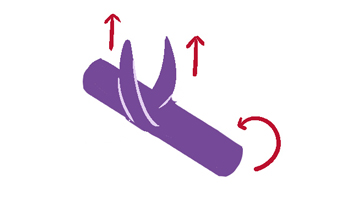
Bring it in the front and tie again with the basic knot 2 times.
-
STEP 6
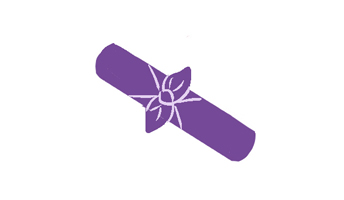
Shape it and finish.
[9] Melon Wrap
Sphere objects such as melon or ball is very difficult to carry. If you’re not careful enough, the object may roll over the ground. Don’t worry, furoshiki has the technique to perfectly wrap sphere objects! (Suitable size: 90 cm width)
-
STEP 1
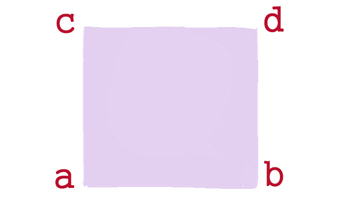
Spread the furoshiki cloth in the backward as shown in the figure.
-
STEP 2
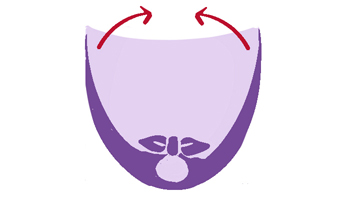
Tie the (a) with (b), and (c) with (d) using the basic knot tightly.
-
STEP 3
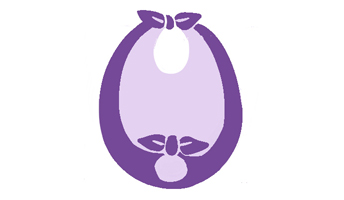
Place the object in the center of the furoshiki.
-
STEP 4
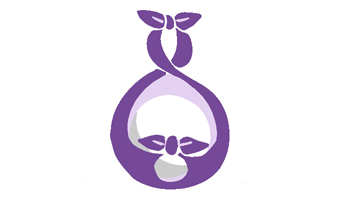
Twist the upper knot once.
-
STEP 5
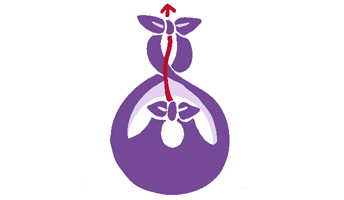
Thread the lower knot as shown in the figure to the twisted knot and tighten it.
[10] Shoulder Bag
You can use the big size furoshiki (90 cm width) to make this eco-friendly shoulder bag. It also acts as a multifunctional bag, and you can easily untie the knot and use it for other purposes.
There are few methods to make shoulder bag using furoshiki cloth. Hopefully this one will be an easy one for you!
-
STEP 1
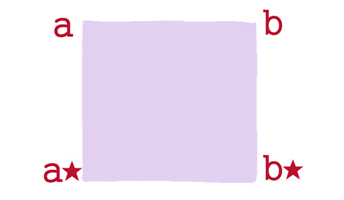
Spread the furoshiki cloth in the backward as shown in the figure.
-
STEP 2
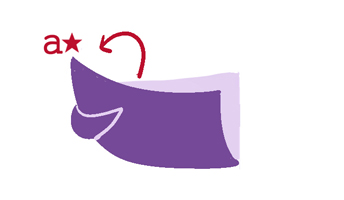
Take the (a★) part longer and tie it with (a) using the basic knot tightly.
-
STEP 3
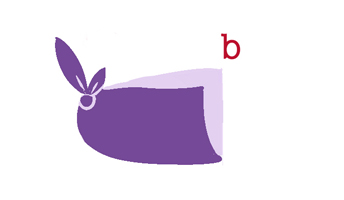
This time, tie (b★) and (b) with the basic knot tightly. Take the (b★) part longer than (b).
-
STEP 4
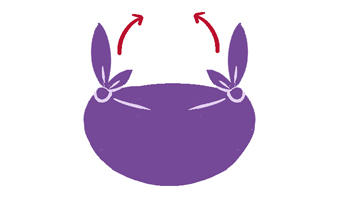
Finish by connecting both ends (a★ and b★) using the basic knot 2 times.
Why Furoshiki Holds an Important Role in Japanese Wrapping Culture?
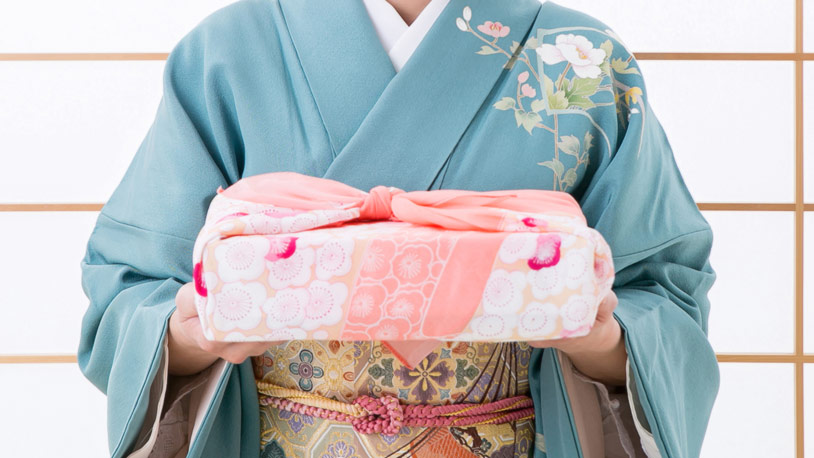
The Japanese gift wrapping culture is very old well-preserved. In Japan, most items are meant to be wrapped neatly to express gratitude through a gift.
The furoshiki cloth, which functions to wrap an item and gift, carries an important role in the Japanese gift wrapping culture since it has been used thousands of years ago. A gift wrapped using the furoshiki cloth could show how the presenter wholeheartedly prepares the gift for the receiver.
Even though furoshiki’s existence and usage once degenerated in the post-war period, furoshiki is now gaining more fame worldwide. This tool was introduced as an eco-friendly stylish bag for plastic and paper bag replacement. These days, furoshiki products are widely available with so many colors and patterns. You can easily buy one in Japan or even in online shops.
If you have never tried it once, we highly recommend using the made-in-Japan furoshiki for a gift or item wrapping.
Furoshiki Cloth History
How furoshiki become the furoshiki we use these days?
Let’s take a peek to the long history of furoshiki!
The name was not Furoshiki at the beginning
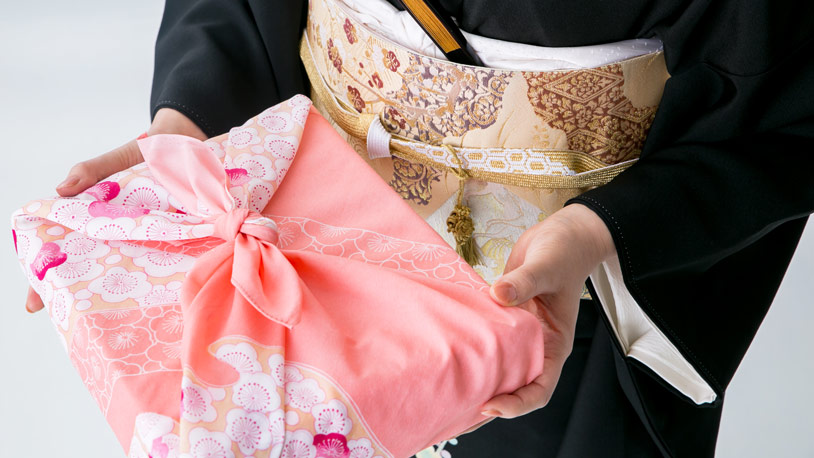
Furoshiki originated in Japan around 710 during the Nara Period. At that time, a tool like furoshiki was used and written in old books with the name Tsutsumi, meaning “package” or “present”. It was a cloth used for wrapping and storing important items.
Moved to the Heian Period (794 – 1185), the furoshiki cloth were called Koromo Tsutsumi. It is a cloth mainly used to wrap clothing.
In the late Heian Period to Nanboku-chō Period, furoshiki cloth for wrapping purpose were known as Hiratsutsumi, or the flat folded bundle. People used this term Hiratsutsumi until the middle of the Edo Period.
The name “Furoshiki” derived in the Muromachi Period
The name Furoshiki roughly translates to 風呂 (Furo, means bath) and 敷 (Shiki, means spread) which means ‘a cloth that spread in the bath’.
The relation between wrapping cloth and baths lies during the Muromachi Period (1336 – 1573). It was believed that the Ashikaga Yoshimitsu, the third Shogunate of the Muromachi Period, established a bathhouse in Kyoto and welcomes the feudal lords (daimyos) to enjoy the facilities. The lords wrapped their kimonos in their family crest (silk furoshiki), making sure they could not mix it up with the others.
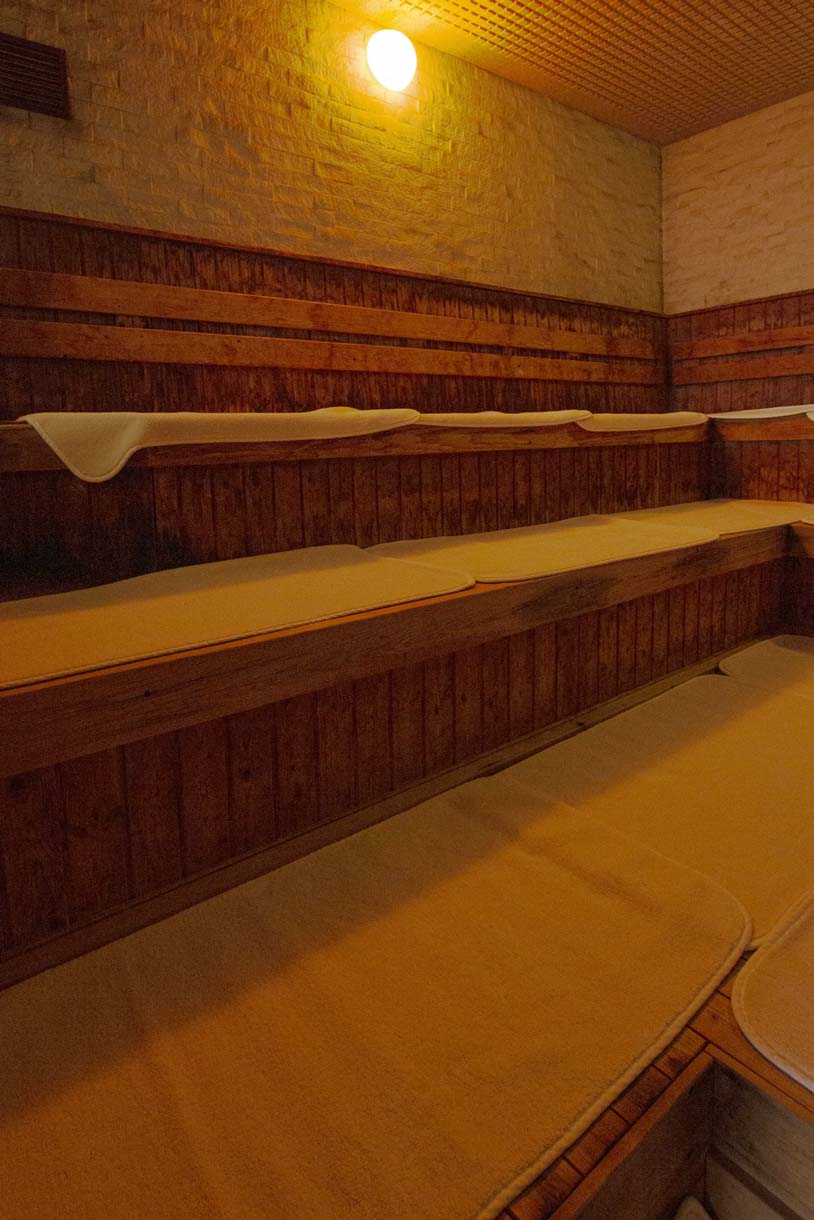
Steam baths were common during this period and the floor was covered with cloth to make the room temperature even. Furoshiki has a similar form and texture to the cloth used in the bath. Moreover, the guests of the bathhouse often spread furoshiki on the bath’s floor as they groom themselves.
Therefore, the reason behind the name ‘Furoshiki’ was because it was used in a bath.
Steam baths were common during this period and the floor was covered with cloth to make the room temperature even. Furoshiki has a similar form and texture to the cloth used in the bath. Moreover, the guests of the bathhouse often spread furoshiki on the bath’s floor as they groom themselves.
Therefore, the reason behind the name ‘Furoshiki’ was because it was used in a bath.
However, the term ‘Furoshiki’ was established in the middle of the Edo Period, after the term ‘Hiratsutsumi’ was no longer used.
Furoshiki and its story until today
As public hot water baths developed and became a common culture in the middle of the Edo Period (1603 – 1868), people used furoshiki to wrap their clothes and bath utensils when they go to the bath.
Furoshiki began to be used for other purposes ever since. It was used to wrap kimonos and gifts, used as luggage, used by merchants to bring their goods and various tools, used by the book store to wrap books or rolled documents, etc.
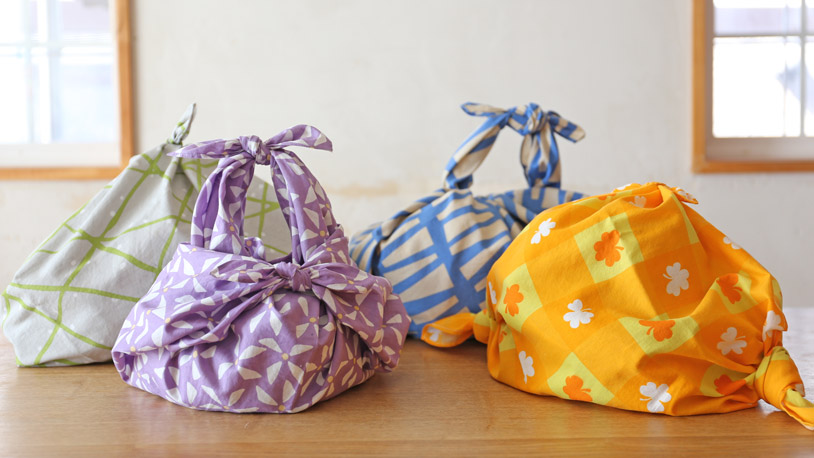
Later in the post-war period, furoshiki gradually disappeared and were replaced by modern paper bags. The opportunity to carry or wrap things using furoshiki in Japan has decreased in an instant.
But furoshiki became popular again as an eco-friendly bag in the 1990s. This time, furoshiki is known worldwide as a flexible bag that can be used multiple times without making any waste for the environment. Furoshiki users can use it freely, as they come in various sizes and can be used to wrap for almost everything.
Furthermore, furoshiki acts as a wrapping tool that values the wrapping culture from Japan. “Wrapping” in Japan means taking care of things sincerely and treating them wholeheartedly. It means a lot for Japanese because Furoshiki holds a long history.
Using Furoshiki to wrap things may be a good start to respond the enviromental issues, isn’t it?
Furoshiki Cloth Q&A
- What is furoshiki?
- Furoshiki (風呂敷) is the Japanese traditional cloth, with beautiful colors and patterns, used for gift wrapping, carrying and transporting various items, and even useful as luggage. This cloth has been used for thousand years in the Japanese wrapping history.
Its existence gained more fame worldwide in recent years as an eco-friendly bag. Furoshiki is presenting a stylish way to wrap items and works as a replacement for plastic and paper bag. Using furoshiki as a bag also become a popular trend used among generations.
- What is furoshiki used for?
- Furoshiki can be used for:
- ● Wrap bento box for school, work or picnics
- ● Wrap gift for relative
- ● Safe wrapping for bottles
- ● Wrap melon or other fruits
- ● Fashionable as shopping bag and luggage
- How to tie furoshiki cloth?
- Furoshiki cloth is handy as they come in various sizes and can be used to wrap for almost everything. We explained the 10 ways to wrap items using furoshiki cloth in this article, complete with picture instructions. Please check it out!
- What is the best furoshiki size to use?
- The most common size you can find are around 19 inches (50 cm) and 27 inches (70 cm). The 50 cm size works perfectly to wrap small things such as lunch bento, water tumbler, and other small things. While the 70 cm to 90 cm size can be used for a shopping bag and wrapping cloths. The size for wrapping gifts can vary according to the gift’s size.
The most common size you can find are around 19 inches (50 cm) and 27 inches (70 cm). The 50 cm size works perfectly to wrap small things such as lunch bento, water tumbler, and other small things. While the 70 cm to 90 cm size can be used for a shopping bag and wrapping cloths. The size for wrapping gifts can vary according to the gift’s size.
The 35 inches (around 90 cm) version is used for wrapping wine bottles or big fruit such as melon.
- Is there a meaning behind furoshiki cloth’s color?
- Quick tip for furoshiki cloth’s color:
- ●Red or Pink: for a happy and auspicious events (weddings, annual custom gifts)
- ●Yellow-ish: for a happy and auspicious events (weddings, annual custom gifts)
- ●Green: for sad and condolence occasions (funerals).
- ●Blue: for sad and condolence occasions (funerals), or for daily errands.
- ●Purple: for expressing gratitude through important gifts, or for daily errands.
- ●Brown-ish: for daily errands with classy taste.
- I received a gift wrapped with furoshiki. What should I do?
- Furoshiki is a wrapping cloth that can be used repeatedly. If you received a gift along with a furoshiki cloth, let’s wash the cloth clean. You can use it for the next gift wrapping occasion, or freely use it at home.

